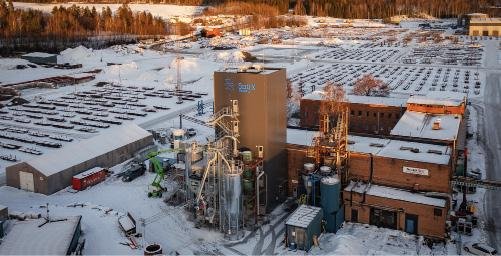Cement sector is a very crucial phase currently. It is the process which has been the longest to criticize as a major marvel, now it does make cement production, worldwide that contributes down to about 7 of the total carbon output. However, the latest advances in electrification technologies have changed the situation by making the impossible possible.
Electrification of process heat in cement manufacturing, though it is still in the initial stage of development, has gained much attention from industry experts. The European Cement Research Academy calls the approach as “promising,” while Sebastian Quevedo Parra and Mattero Romana researchers from Politecnico di Milano have named it “an interesting option to reduce the CO2 generated from fuel combustion.” These evaluations, though cautiously enthusiastic, are a sign of the main turn that the industry makes in respect of its perception of the carbon-intensive profile.
A particularly engaging innovation is to combine cement production and steel manufacturing in electric arc furnaces (EAFs). The project was planned for industrial-scale testing at Celsa’s facility in Cardiff this past May, where it works by reactivating old cement using the high temperatures generated in the furnace. The lead scientist, Cyrille Durant, pinpointed a key advantage: these furnaces can operate entirely on renewable electricity that, in return, will not emit any carbon during the cement production process.
Electric heating systems have added an unexpected benefit that many people overlook. In comparison to using gas burners, electric systems generate effluents with vastly higher concentrations—almost 100% CO2 instead of the usual 25%. Such a feat is easy to capture and extract as carbon dioxide from the process stream, and it has the potential to change the course of emissions in processing.
Divergent Strategies and Schedules
Aside from direct heat electrification, researchers have invented an electrochemical method that is totally different from limestone. This innovative technique makes elements through the use of minerals that can be carbon-free and recycled from concrete. The system is cleverly based on the electrolysis of water that produces protons and hydroxides and thereby creates a pH gradient that accelerates the leaching of calcium from the silicate while at the same time capturing CO2 from the air. The final product? Calcium carbonate that is negative in carbon and is the feedstock for cement manufacturing.
The electrochemical route also has the benefit of yielding co-products like the amorphous silica and green hydrogen which not only enhance the quality of the cement but also help in the transition from fossil fuels. The prime reason is that the products currently adhere to the regulatory standards and they can be incorporated with the existing systems for cement production making it fast and easy.
Companies that are in the leading position in cement innovation have made great strides towards commercializing their products. Ecocem’s ACT technology which combines supplementary cementitious materials with limestone filler and novel admixtures has been given a European Technical Assessment and exhibited a 70% reduction in CO2 against average European cement blends. The company intends to ship the first ACT cement to European markets in 2024, with the full commercialization in 2027, although the actual target is set for 2026.
Another attractive solution is CarbonCure’s technology that involves the injection of captured CO2 and the injection of encapsulated CO2 in concrete. This ensures that concrete is performed structurally, solidly but reduces the clinker required to perform the same way. Likewise, TerraCO2 has invented well-tried supplementary cementitious materials which can be partially—or recently even entirely—clinker concrete mixture matters.
Around 33% of the cement production process emissions are caused by the energy consumption during the production process itself. Dealing with this faction needs multiple decisions like energy efficiency, the change to cleaner fuels, and electrification through renewable electricity. Scientists believe breakthroughs in clean energy costs, entrepreneurship in technologies, and the support of the legislative sector will be necessary to address energy-related emissions significantly for the cement sector.
The cement industry’s journey toward transformation is definitely not without hurdles. The traditional cement production process primarily composed of the 200-year-old paradigm of direct liming is a big challenge to electrifying at the industrial scale. However, the combination of electrochemical innovations, alternative materials, and integration of renewable electricity offers a pathway which was rarely thought of in the recent past.
Throughout 2024 and further as these approaches move from the laboratory to industrial implementation, it seems likely that the cement industry, once considered immovable, could undergo the most unprecedented industrial drive ever one that would help it regain its former position in a carbon-limited world.







